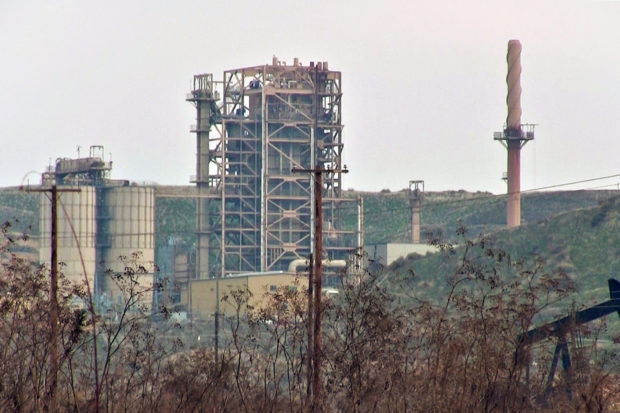
By Tom Frantz
For years, San Joaquin Valley clean air activists have railed against the local air district program of emission reduction credits (ERCs). This program allows new polluting projects to mitigate their emissions by purchasing credits from projects that have voluntarily shut down in the past.
Local frustration came to a head when a dirty new coal-burning power plant (HECA) was proposed for Kern County about 10 years ago. This project purchased, with federal tax dollars, several million dollars of ERCs that were 40 years old and of questionable provenance.
Bragging about all the related mitigations, the then head of the air district, Seyed Sadredin, proclaimed publicly, with a sneer, that this project, if built, would actually make Valley air cleaner. Fortunately for breathers, the project failed for multiple reasons.

In 2018, Earthworks released a study detailing some of the air district’s irregular and inappropriate use of ERCs. They showed how the oldest ERCs pre-dated the formation of the San Joaquin Valley Air Pollution Control District in 1991.
Earthworks made public records requests, but they couldn’t find the paperwork justifying many of the emission reductions. They did find that some of these ERCs were booked years after the equipment shutdowns they represented.
Complaints from activists always seemed to fall on deaf ears. Without these credits, economic growth in the Valley would stagnate proclaimed the good ol’ boys on the Valley air board.
In early January 2019, the Central Valley Air Quality Coalition (CVAQ) wrote a formal letter to the California Air Resources Board (CARB) requesting an audit of these ERCs based on the Earthworks study. The CARB agreed.
At a meeting in Fresno on Jan. 24, 2019, the CARB directed staff to come back with an audit report in six months. On June 6, 2020, 18 months later, the audit report was finally released.
The report is honest in that it explains how the majority of ERCs are indeed old and lack proper documentation. Ironically, everyone knew that already but now it is part of a formal government report requiring a response from the politicians who run these air pollution control health agencies.
The report spends a lot of time explaining how these ERCs are used. In opposition to the Environmental Protection Agency (EPA), back in 1993, California wanted to use these ERCs with the value they had when they were issued (when the equipment shutdown occurred). The EPA countered they should be periodically discounted to account for new rules that would eventually have prohibited or greatly limited those emissions.
To get around this conflict with the EPA, the air district contrived to go ahead and give full credit for all ERCs at the time of issuance, but they would prove that there were other emission reductions taking place in the Valley that would make up the difference for any of the credits needing to be discounted. That process is formally called an Equivalency Demonstration and is seldom used elsewhere. This was a big windfall for the Valley ERC owners, namely big polluters such as oil companies.
What the audit report shockingly discovered is that the Equivalency Demonstrations periodically submitted by the air district have been full of errors. The air district has been claiming reductions from incentive programs it administers to help justify not discounting the outdated ERCs. These incentive credits were highly inflated and/or double counted.
The air district also has been forced to use reduction credits from “orphan shutdowns.” These are equipment shutdowns that have not been claimed by businesses as a formal emission reduction credit. The air district also overestimated most of these emission reductions significantly. Some of their claims were entirely bogus.
Here are a few examples of air district misdeeds:
- Cotton gins were shut down because of cotton acreage shrinkage and buildings were converted into dusty almond hullers. Remaining cotton was moved to other gins. Yet credits were given for total emissions from each shutdown.
- A coal plant was forced to shut down in Kern County by state law, which prohibits dirty power generation. Yet the owners were given millions of dollars of credits for the pollution they no longer emitted as if it was a volunteer shutdown.
- Federal funds were used to convert diesel agricultural water pumps to electricity, and the air district illegally claimed all the credit.
- Many applications for credit were approved years after facility shutdowns, but the law states such applications have to be made within 180 days.
This audit demonstrates two things. First, the air district has been cheating by mitigating new emissions by claiming emission reductions that either do not exist or are meaningless because of age. Second, the air district has been slowing down improvements to our air quality for the financial benefit of big polluters and at the expense of taxpayers who pay for the incentive funding.
What remains now is a political response from the CARB. Will it do justice and take the side of clean healthy air or stay on the dark side of continued pollution?
*****
Longtime clean air advocate Tom Frantz is a retired math teacher and Kern County almond farmer. A founding member of the Central Valley Air Quality Coalition (CVAQ), he serves on its steering committee and as president of the Association of Irritated Residents. The CVAQ is a partnership of more than 70 community, medical, public health and environmental justice organizations representing thousands of residents in the San Joaquin Valley unified in their commitment to improving the health of Californians. For more information, visit www.calcleanair.org.
